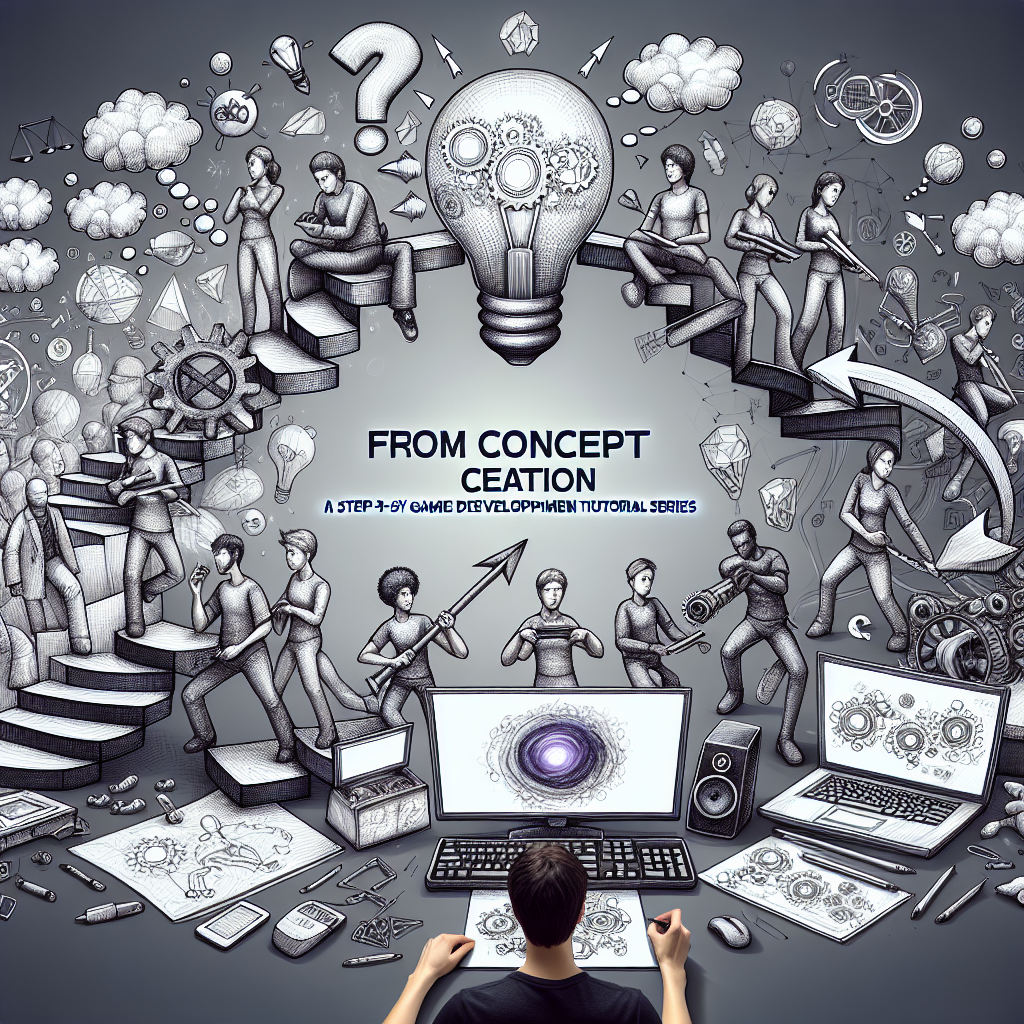From Concept to Creation: A Step-by-Step Game Development Tutorial Series
In an era where gaming has evolved into one of the most significant forms of entertainment, aspiring developers are more eager than ever to turn their creative ideas into playable experiences. Whether you’re a seasoned programmer, a budding artist, or someone with just an idea, our “From Concept to Creation” game development tutorial series aims to guide you through every phase of the game creation process. This series is designed to be comprehensive, making it accessible to individuals at all levels, while still providing valuable insights for experienced developers.
Overview of the Series
“From Concept to Creation” will be divided into several parts, each focusing on a specific aspect of game development. These parts include:
- Game Concept and Planning
- Game Design Document (GDD)
- Storyline and Character Development
- Art and Asset Creation
- Programming Fundamentals
- Level Design
- Sound Design and Music
- Testing and Quality Assurance
- Publishing and Marketing
Let’s delve deeper into each segment.
1. Game Concept and Planning
Every game begins with an idea. In this phase, we explore various techniques for brainstorming, refining concepts, and evaluating ideas for viability. Utilizing methods like mind mapping and storyboarding, we’ll help budding developers understand how to translate their visions into a structured concept.
2. Game Design Document (GDD)
A Game Design Document is an essential step in laying out the overall structure and details of your game project. It serves as a blueprint for your game and can include everything from gameplay mechanics and user interface design to technical requirements. In this segment, we will provide templates and examples to guide you in creating a comprehensive GDD.
3. Storyline and Character Development
Engaging narratives and well-crafted characters are crucial to player immersion. We will delve into storytelling techniques, character arcs, and the creation of compelling dialogue. This segment will include tips for world-building and the importance of player choices in shaping the story.
4. Art and Asset Creation
Visuals play a pivotal role in engaging players. Whether you’re focused on pixel art, 3D modeling, or animations, we’ll cover tools and techniques for creating stunning game assets. This section will also touch on the importance of maintaining a consistent art style and creating a cohesive visual language for your game.
5. Programming Fundamentals
For those without a programming background, worry not! This segment will provide a gentle introduction to game development programming using popular languages and engines like C# with Unity, or GDScript with Godot. We will break down core programming concepts, making them understandable even for beginners.
6. Level Design
Creating memorable and enjoyable levels requires a thorough understanding of player psychology and game mechanics. We will discuss principles of level design, environments, player progression, pacing, and integrating challenges that keep players engaged. The segment includes practical exercises to help you design your levels.
7. Sound Design and Music
Sound plays an essential role in enhancing the gaming experience, adding atmosphere, emotion, and feedback. In this section, we will explore sound design basics, tools for creating audio assets, and how to compose music that resonates with your game’s theme.
8. Testing and Quality Assurance
Quality assurance is a vital process in game development. Here, we will teach you how to conduct effective testing, identify bugs, and gather feedback. Our guides will provide strategies for both alpha and beta testing, including how to use player feedback to improve your game’s quality.
9. Publishing and Marketing
With your game developed, it’s time to share it with the world. This final segment focuses on the steps to publish your game on various platforms, from Steam to mobile app stores, as well as marketing strategies that will provide you the visibility needed to attract players. We will highlight the importance of building a community and engaging potential fans before and after your game’s release.
Conclusion
The journey from concept to creation is as exhilarating as it is challenging. This tutorial series aims to empower you, whether you’re creating a solo project or working in a team. From understanding the foundational steps of game design to mastering the intricacies of programming and marketing, our series will equip you with the tools and knowledge needed to transform your game idea into a reality.
Stay tuned as we release each new segment, packed with insights, resources, and practical exercises designed to ignite your imagination and elevate your game development skills. The only limit is your creativity—let’s get started!




